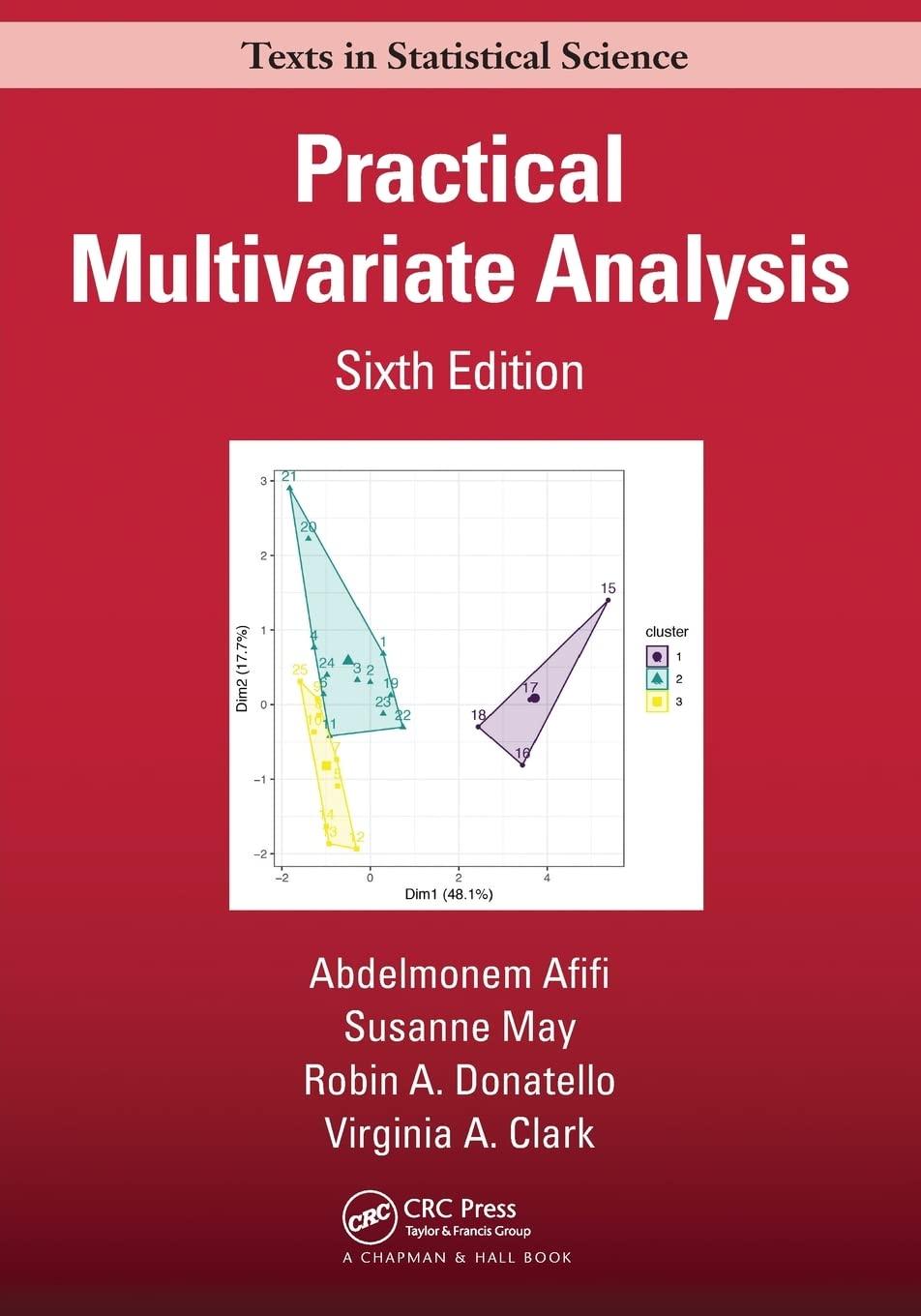(Y is not used here). Then for the first 50 cases, add 6 to X1, add 3...
Question:
(Y is not used here). Then for the first 50 cases, add 6 to X1, add 3 to X2, add 5 to X3, and leave the values for X4 to X9 as they are. For the last 50 cases, leave all the data as they are. Thus the first 50 cases represent a random sample from a multivariate normal population called population I with the following means: 6 for X1, 3 for X2, 5 for X3, and zero for X4 to X9. The last 50 observations represent a random sample from a multivariate normal population (called population II) whose mean is zero for each variable. The population Mahalanobis D2’s for each variable separately are as follows: 1.44 for X1, 1 for X2, 0.5 for X3, and zero for each of X4 to X9. It can be shown that the population D2 is as follows: 3.44 for X1 to X9; 3.44 for X1, X2 and X3; and zero for X4 to X9. For all nine variables the population discriminant function has the following coefficients; 0.49 for X1, 0.5833 for X2, ????0:25 for X3, and zero for each each of X4 to X9. The population errors of misclassification are Prob(I given II) = Prob(II given I) = 0:177 Now perform a discriminant function analysis on the data you constructed, using all nine variables. Compare the results of the sample with what you know about the populations.
Step by Step Answer:

Practical Multivariate Analysis
ISBN: 9781032088471
6th Edition
Authors: Abdelmonem Afifi, Susanne May, Virginia A. Clark, Robin Donatello






